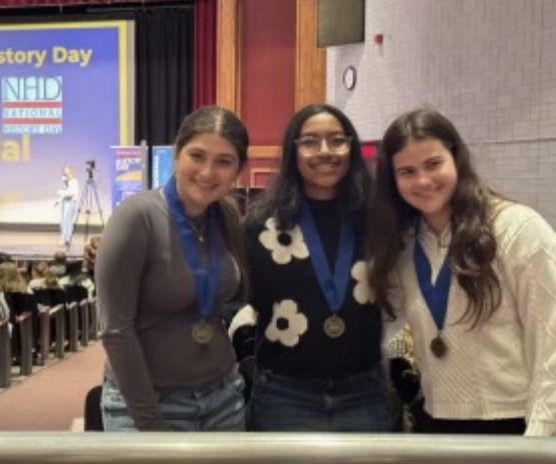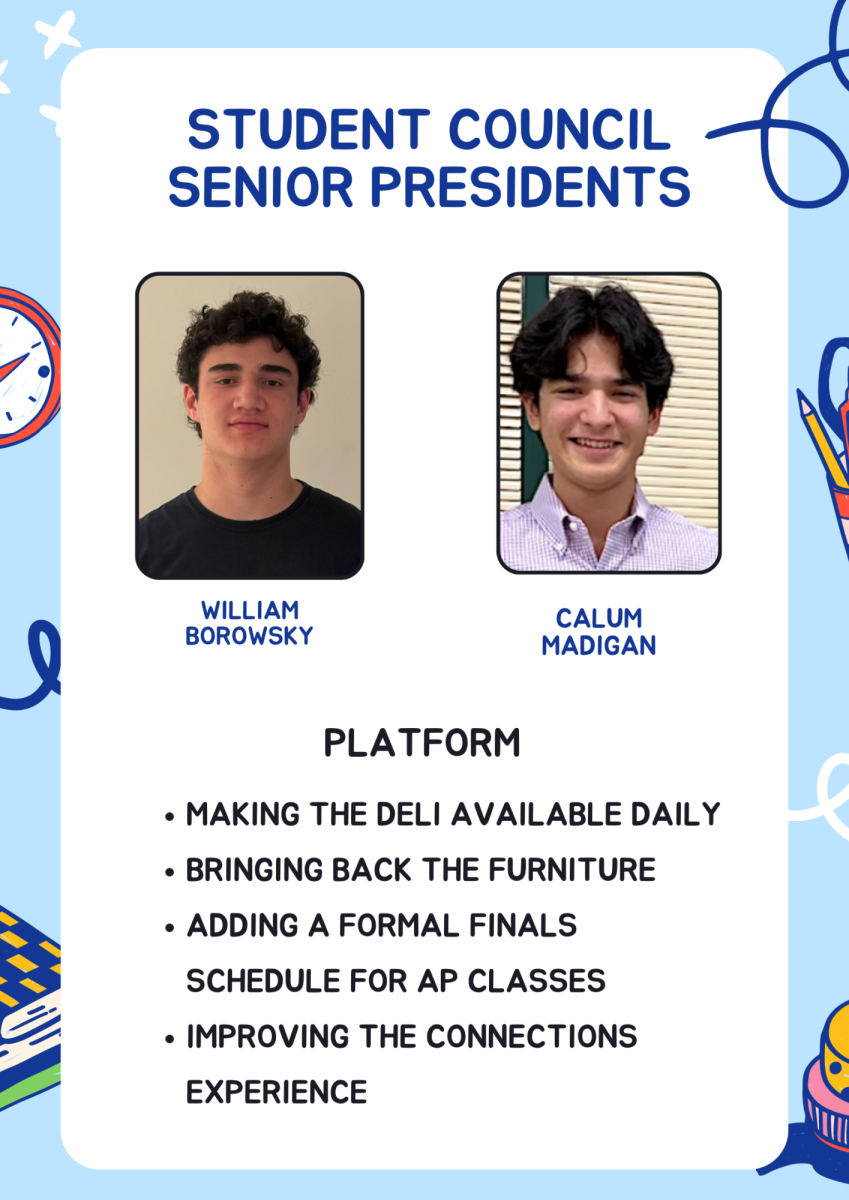News: Prejudice Against Disabilities
Fabian Becerra ’17 was five years old when he began to feel weakness in his legs.
“I was still able to walk then,” he said. “But I would get tired and need to rest.”
Little by little, Becerra’s legs lost functionality. After dislocating and breaking his right knee at 12 years old, he became completely dependent on his wheelchair.
He hasn’t walked since.
Becerra is one of 500,000 children under the age of 18 in the United States who is currently affected by cerebral palsy, “a congenital disorder of movement, muscle tone, or posture,” according to Mayo Clinic. It is the most common motor disability in children.
Becerra’s life as he knew it quickly changed as a result of his disability. He was placed in special needs courses that he felt he didn’t belong in. He was taking more medication, seeing more therapists, avoiding the stairs at all costs. He became more self-conscious, emotional and stressed.
On top of all this, Becerra found himself facing ignorance and prejudice from his peers.
“It was students who would ask me questions so piercing and hurtful that I was amazed that kids at Staples and at other schools could think those things,” he said. “The kids who often associated themselves with me were often too scared to hang out with me publicly, as if I would make them less popular.”
Now, as a junior, Becerra has had enough of being treated differently.
“I want someone to know and not be scared of me,” he said. “I want someone to give me a chance.”
But Becerra isn’t the only one who’s affected by the stigma against people with disabilities. In fact, this stigma is pervasive in our society, according to Sylvia Yee, an attorney at the Disability Rights Education and Defense Fund.
In her paper, “Where Prejudice, Disability and ‘Disablism’ Meet,” Yee references the work of various activists, scientists and professors who have dedicated their lives to understanding these prejudices and advocating for their elimination.
Paul Hunt, a first-generation disability activist on prejudice said that prejudice against a disability is a “complex and sophisticated form of social oppression or institutional discrimination on a par with sexism, heterosexism and racism.”
However, when 200 Staples students were asked in an anonymous poll which act of discrimination they are least informed about, out of sexism, disablism, heterosexism and racism, 77.5 percent said disablism.
Connor Mathewson ’16 believes this outcome is a result of common standards of political correctness. “Any kind of prejudice or exclusion is wrong,” he said. “But depending on the region or community, being racist or homophobic tends to be seen as worse than the exclusion of people with disabilities.”
One consequence of this stigma, according to political scientist Harlan Hahn, is “the pervasive sense of physical and social isolation produced not only by the restrictions of the built environment but also by the aversive reactions of the nondisabled that often consign [disabled people] to the role of distant friends or even mascots rather than to a more intimate status as peers, competitors or mates.”
Becerra has experienced treatment described by Hahn in the halls at Staples.
“When you’re social and people reject you, you’re stuffed back into your shell,” he said. “It turns you into an antisocial monster.”
Maya Lawande ’16, president of the Staples Chapter of Best Buddies, notices the prejudice that exists in Staples and sees the effect it has on the buddies.
“It could be just always sitting alone at lunch, never being invited to social events on the weekends or feeling isolated and ignored by your peers,” she said. “Students with IDD [intellectual and developmental disabilities] at Staples have experienced situations like those because people are unintentionally being exclusive.”
Buddy Director Johnny Bairaktaris ’16 is an advocate for students with special needs. “People who have special needs and who are disabled feel that they are alone, but they are not,” he said. “They have a heart. They can think, and they can be hurt.”
Bairaktaris joined Best Buddies because he feels passionately about “advocating for kids with special needs,” and wants to make being different “a little bit more swallowable,” for others.
Lawande has similar aspirations in her role as Staples Chapter president.
“I hope the club gives our buddies meaningful friendships, friendly faces around school and great memories to look back on after their time at Staples,” she said.
But even though prejudice against the disabled exists, Lawande doesn’t believe that Staples is a “malicious” place. In fact, she is optimistic that Staples will have a more inclusive and empathetic culture in the future.
“I am confident that if people at our school thought to take the time and reach out to someone with IDD, Staples would be a much more inclusive place,” she said.
As Becerra continues to advocate for kindness, he hopes to see change in both the way he is treated by his peers and the way his peers treat others who are faced with disabilities.
“I want people to see me and kids like me as normal individuals who have disabilities,” he said. “I want to make the school better than it was when I came.”
Fabian Becerra ’17 was five years old when he began to feel weakness in his legs.
“I was still able to walk then,” he said. “But I would get tired and need to rest.”
Little by little, Becerra’s legs lost functionality. After dislocating and breaking his right knee at 12 years old, he became completely dependent on his wheelchair.
He hasn’t walked since.
Becerra is one of 500,000 children under the age of 18 in the United States who is currently affected by cerebral palsy, “a congenital disorder of movement, muscle tone, or posture,” according to Mayo Clinic. It is the most common motor disability in children.
Becerra’s life as he knew it quickly changed as a result of his disability. He was placed in special needs courses that he felt he didn’t belong in. He was taking more medication, seeing more therapists, avoiding the stairs at all costs. He became more self-conscious, emotional and stressed.
On top of all this, Becerra found himself facing ignorance and prejudice from his peers.
“It was students who would ask me questions so piercing and hurtful that I was amazed that kids at Staples and at other schools could think those things,” he said. “The kids who often associated themselves with me were often too scared to hang out with me publicly, as if I would make them less popular.”
Now, as a junior, Becerra has had enough of being treated differently.
“I want someone to know and not be scared of me,” he said. “I want someone to give me a chance.”
But Becerra isn’t the only one who’s affected by the stigma against people with disabilities. In fact, this stigma is pervasive in our society, according to Sylvia Yee, an attorney at the Disability Rights Education and Defense Fund.
In her paper, “Where Prejudice, Disability and ‘Disablism’ Meet,” Yee references the work of various activists, scientists and professors who have dedicated their lives to understanding these prejudices and advocating for their elimination.
Paul Hunt, a first-generation disability activist on prejudice said that prejudice against a disability is a “complex and sophisticated form of social oppression or institutional discrimination on a par with sexism, heterosexism and racism.”
However, when 200 Staples students were asked in an anonymous poll which act of discrimination they are least informed about, out of sexism, disablism, heterosexism and racism, 77.5 percent said disablism.
Connor Mathewson ’16 believes this outcome is a result of common standards of political correctness. “Any kind of prejudice or exclusion is wrong,” he said. “But depending on the region or community, being racist or homophobic tends to be seen as worse than the exclusion of people with disabilities.”
One consequence of this stigma, according to political scientist Harlan Hahn, is “the pervasive sense of physical and social isolation produced not only by the restrictions of the built environment but also by the aversive reactions of the nondisabled that often consign [disabled people] to the role of distant friends or even mascots rather than to a more intimate status as peers, competitors or mates.”
Becerra has experienced treatment described by Hahn in the halls at Staples.
“When you’re social and people reject you, you’re stuffed back into your shell,” he said. “It turns you into an antisocial monster.”
Maya Lawande ’16, president of the Staples Chapter of Best Buddies, notices the prejudice that exists in Staples and sees the effect it has on the buddies.
“It could be just always sitting alone at lunch, never being invited to social events on the weekends or feeling isolated and ignored by your peers,” she said. “Students with IDD [intellectual and developmental disabilities] at Staples have experienced situations like those because people are unintentionally being exclusive.”
Buddy Director Johnny Bairaktaris ’16 is an advocate for students with special needs. “People who have special needs and who are disabled feel that they are alone, but they are not,” he said. “They have a heart. They can think, and they can be hurt.”
Bairaktaris joined Best Buddies because he feels passionately about “advocating for kids with special needs,” and wants to make being different “a little bit more swallowable,” for others.
Lawande has similar aspirations in her role as Staples Chapter president.
“I hope the club gives our buddies meaningful friendships, friendly faces around school and great memories to look back on after their time at Staples,” she said.
But even though prejudice against the disabled exists, Lawande doesn’t believe that Staples is a “malicious” place. In fact, she is optimistic that Staples will have a more inclusive and empathetic culture in the future.
“I am confident that if people at our school thought to take the time and reach out to someone with IDD, Staples would be a much more inclusive place,” she said.
As Becerra continues to advocate for kindness, he hopes to see change in both the way he is treated by his peers and the way his peers treat others who are faced with disabilities.
“I want people to see me and kids like me as normal individuals who have disabilities,” he said. “I want to make the school better than it was when I came.”

When she first joined Inklings her sophomore year, Jane Levy ’16 was scared to raise her hand in class. She lacked confidence in her voice and her skill....












































